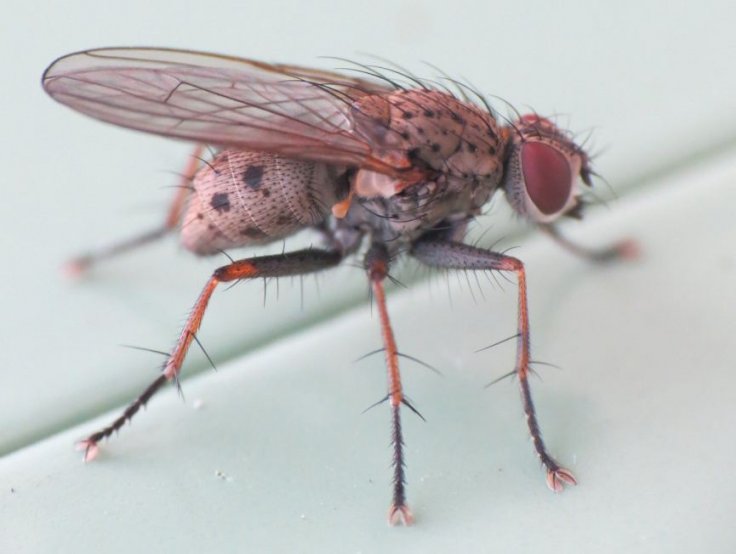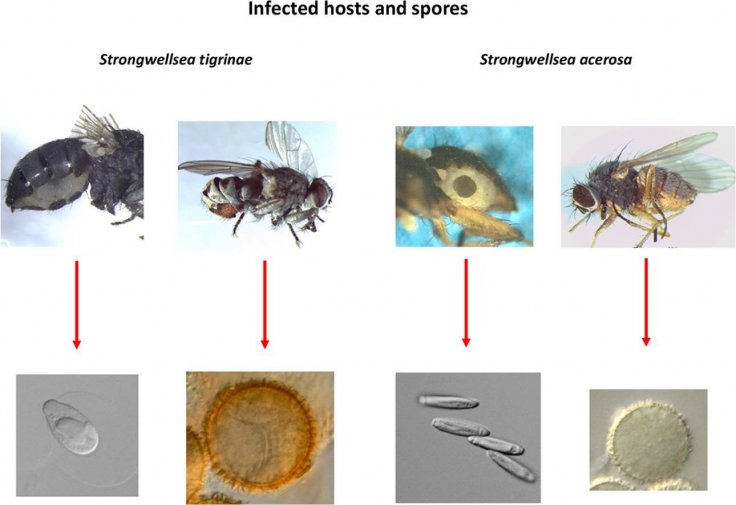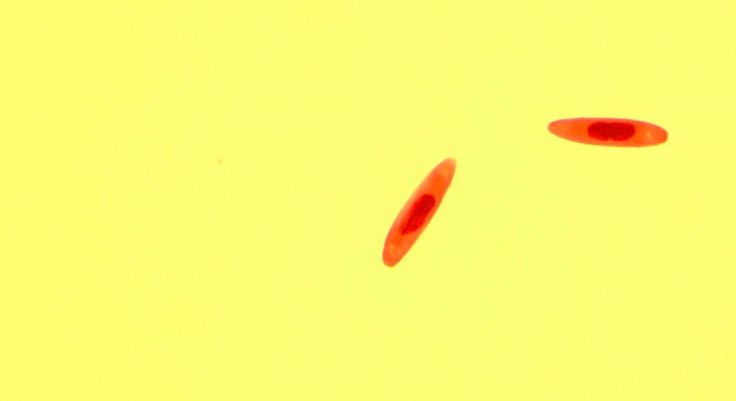The very idea of a microbe devouring an organism alive sounds like the plot of a spine-chilling sci-fi horror movie. However, proving that nature, in all its beauty, has its share of horrors as well, a new study has reported the discovery of two species of fungus that eat flies alive from within.
Researchers from the University of Copenhagen discovered two species of fungi—Strongwellsea acerosa and Strongwellsea tigrinae—in the capital of Denmark. The fungi were found to consume flies from within and eject fungal spores from the holes they made in the bodies of the insects.

"This is an exciting and bizarre aspect of biodiversity that we have discovered in Denmark. In and of itself, this mapping of new and unknown biodiversity is valuable," said Prof. Jørgen Eilenberg, corresponding author of the study, in a statement.
Making 'Puppets' Out of Other Organisms
Insects 'using' other insects to carry out their 'bidding', is not unheard of. For example, several species of wasps and flies are known to lay their eggs inside other insects such as beetles and caterpillars, and letting the larvae hatch inside and feed on them—essentially using them as incubators and sources of food that are eaten alive.
In the fungal world itself, Massospora cicadina is known to infect Cicadas. The fungus, which has a hallucinogenic effect on the male insects, turns them into a 'zombie'. Under the influence of the chemicals produced by the fungus, the males engage in a female mating 'dance' that attracts other males who attempt to mate with the 'zombified' males and get infected in turn.
Eating Flies Alive

Through the current study, however, the authors found that the two new species of fungi infect two Danish flies—Coenosia tigrina and Coenosia testacea—who ironically prey on other insects, including other types of flies. Following the infection of the flies, large holes are created in the abdomen of the hosts by the fungi due to the flesh being eaten away.
Despite having massive cavities bored out of them, the hosts fly around for several days as they release fungal spores in the air from their holes. This, in turn, leads to the infection of other new victims. Suppose a fly attempts to mate with an infected fly, it could very well fall prey to the infection.

Much like how parasitic fly larvae seek nourishment from the flesh of their living hosts, the fungi also feast on the rear portions of the flies' bodies till the very end of the infected insects' lives. As they lie dying on their backs after a few days, the flies experience excruciating pain in the last few hours of their existence.
Adapting to Survive
While the hole-boring ability of the two fungal species is lethal, the authors suggest that only a minor percentage of the two varieties of flies are infected by them. The flesh-eating fungi are said to persist in the harsh winter by relying on their thick-walled, yellow or orange spores.

The scientists also posited in the study, that during spring, the resting spores germinate. And as their activity kicks-in, they infect the flies. "It is fascinating how the life cycles of these fungi are so well adapted to the lives of the flies they target," expressed Prof. Eilenberg.
'Doping' the Hosts Out
It is both fascinating and terrifying that the fungi manage to keep the flies abuzz for a few days as they voraciously ingest their insides. This led to the authors speculating that it is likely that the two funguses may potentially be producing chemicals that "dope" the hosts.

Based on research related to other varieties of fungi that infect insects such as Cicadas, Prof. Eilenberg propounded that amphetamine-like substances may be playing a role in the process. Amphetamines are chemicals that are known to stimulate the central nervous system.
"We have a theory that the fungi also produce substances which keep microorganisms away from the fly's fungal wound. We would definitely like to continue our research, as doing so has the potential to discover and later make use of these substances, perhaps in medicine," concluded Prof. Eilenberg.









